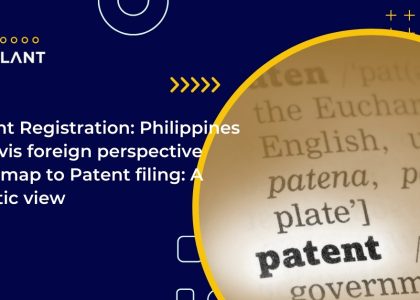All you need to know about patent drafting
There isn’t anything that might be considered fundamental regarding writing patents. New innovators will undoubtedly be cautious about the work, especially since making a mistake may be expensive. Oversharing or being overly particular might offer your rivals an advantage you don’t want them to have.
Because of this, it is important to follow the advice and direction of an experienced intellectual property lawyer. They possess the expertise needed to prepare a precise and thorough patent application that encapsulates the innovative features of your invention. When an experienced expert designs the patent, your innovation will probably acquire broader and more significant protection.
Patent Protection
One of the most important steps to protect a new invention is to submit a patent application. It’s simpler to say than to accomplish. Each patent draft application must adhere to specific conditions under U.S. patent law. Furthermore, patent applications have optional components. To get the fullest protection for your innovation, it may be important to include or remove certain elements.
Your application must be well-written when retaining your rights depends on patent protection. That frequently entails delegating the work to an accomplished intellectual property lawyer. This is because they know the fine line between revealing just enough to gain relevant coverage without becoming overly particular so that your competitors might readily create a patent-evading substitute.
What Is Patent Drafting?
This is the skill of writing a specification that expresses the innovation succinctly and clearly. It is divided into sections that comprise an overview of the invention, a technical background, and a synopsis of any accompanying drawings. The invention is then further described in detail.
The specification must have enough specificity to specify every component of the innovation. Any distinctive and original features of the innovation are given special attention. Aspects of the current product may also be mentioned if the invention is an improvement on it, but only in sufficient detail to provide background information. This aspect of the application should not obscure the distinctive qualities of the innovation.
The invention’s novel and distinctive features are explained in great depth. However, a knowledgeable intellectual property attorney understands the need to be vague. A rival may reproduce the innovation with alternative proportions to prevent infringement; therefore, recommending that an invention conforms to specific dimensions is not a good idea. Generally speaking, it is better to provide a variety of potential measurements which may be appropriate.
The claims are the other crucial component of the patent application. These claims highlight the features of the invention that you want to be protected more precisely. The invention’s innovative, special, and non-obvious characteristics, which qualify it for patent protection, should be included.
Why Is Patent Drafting Important?
Every patent application is prepared in writing and sent to the USPTO for examination by an Examiner. These Examiners are lawyers with particular technological backgrounds, similar to intellectual property lawyers. These qualifications make them capable of examining intricate and highly scientific patent applications.
Additionally, examiners search the U.S. Patent and Trademark Office’s archives for related applications and patents. In essence, they are looking to see if the present patent application’s subject matter has previously been disclosed in a previous application. The Examiner may claim that the present invention cannot be patented because it is not novel and not apparent if they discover an application or patent with a disclosure similar to the current invention.
Understanding the “prior art,” or earlier patents and applications that already exist, is, therefore, one of the duties of the intellectual property lawyer. This makes it easy to create a patent application emphasizing how the new invention differs from previously disclosed ideas freshly and innovatively.








